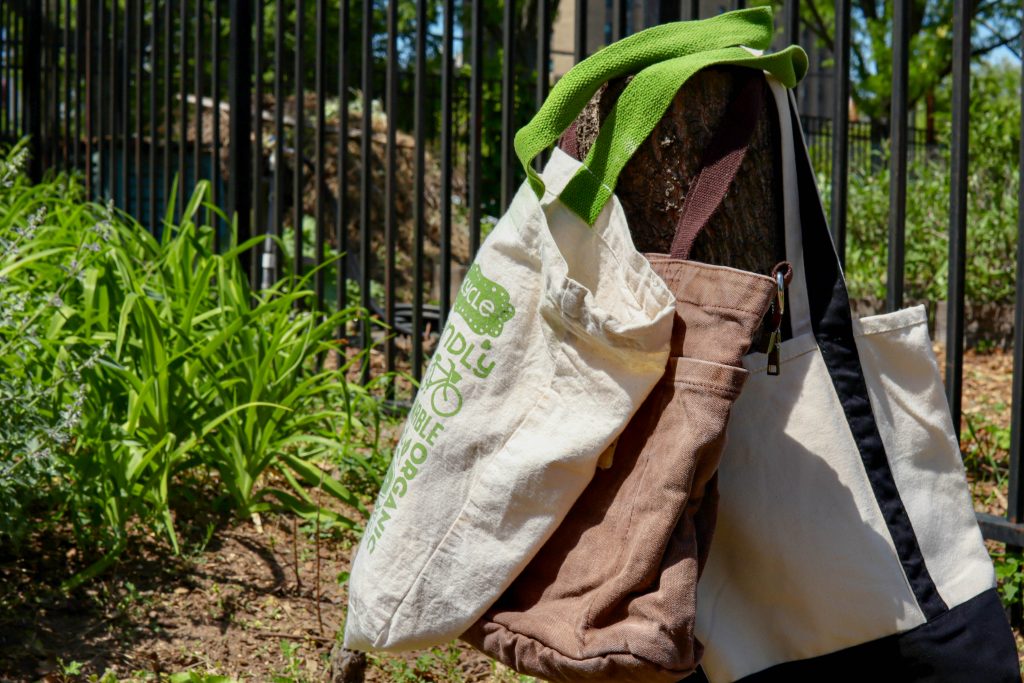
Forget resumes and LinkedIn profiles — your real first impression is the bag you haul into Wawa at midnight. One walk down Lancaster or a quick stop at Summit, and two favorites dominate the scene: the sleek, navy Longchamp Le Pliage and the slightly battered Trader Joe’s tote. They are less about what you carry and more about what you are quietly broadcasting.
At first glance, they could pass as distant cousins at a crowded family reunion — both durable, both mysteriously able to carry a week’s worth of chaos while still pretending to be “casual.” But make no mistake: these bags are carrying a lot more than your laptop and leftover Chipotle. They are carrying narratives. Because on campus, your tote bag might just be your loudest statement.
In the wild, i.e., the stretch between Millenium and Saxbys, few objects spill the economic tea quite like what you sling over your shoulder. It is not just canvas and straps. It is signaling. Pure, portable signaling.
Enter: Drexel’s two reigning champs of the tote scene. On one end, the sleek navy Longchamp — a $150 whisper that says “I brunch at Sabrina’s and my LinkedIn is a minor deity.” On the other, the Trader Joe’s tote — crumpled, character-filled and quietly screaming, “I’m chill, eco-conscious and yes, I did bring my own cup to Starbucks.”
Let us break it down. The Longchamp is what economists call a costly signal. It is not yelling; it is curating. Think Pinterest-board-turned-purse. It does not just hold things — it holds taste. You can spot it under the elbows of students who look like they were born with co-op offers and who somehow never forget their reusable straw.
The Trader Joe’s tote, meanwhile, is playing a different economic game. It is the thrift-flex. The look-at-me-not-looking-at-you flex. It says, “I care more about carbon footprints than capitalism and I probably thrifted this entire outfit.” And the kicker? It is five bucks. Which somehow makes it cooler. Because, in the right crowd, being above the flex is the ultimate flex.
But here is the catch: both bags are playing the same game. They are signaling identity, status and tribe. One says you summer in the Hamptons (or pretend to), the other says you volunteer at the food co-op (or at least thought about it once). In both cases, the bag is talking before you even say a word.
And this is where social proof sneaks in. One Longchamp becomes two, then twelve and suddenly it is an unofficial uniform. Same with the Trader Joe’s tote. You’re not just carrying groceries — you’re carrying credibility. It is anthropology, but with better fonts.
At a school like Drexel — part business incubator, part liberal arts fever dream — fitting in takes finesse. You’re dropped into a swirl of co-op kids, design majors, finance bros and future TED Talkers. There is no dress code. Just vibes. So you watch. You adapt. You tote.
Because in the chaos of quarter system survival, sometimes the fastest way to say “I belong here” is with the right tote bag.
For a lot of us, Drexel is a huge transition. Maybe you came from a tiny suburban town, or maybe you commuted from a neighborhood where no one cared about “fit pics.” Maybe, like me, you come from a different socioeconomic background, where owning a $150 tote bag seemed absurd. Suddenly, you are surrounded by students whose LinkedIn profiles are shinier than your GPA and who treat spring break trips to Europe like a given, not a flex.
Fashion becomes survival — armor against the cognitive biases that favor the elite. Tote bags, Sambas, oversized jackets: they are not just trends. They are a silent answer to the question we are all quietly asking: “Do I fit here?” And sometimes, they are the silent hope that one day, the answer will feel like an automatic yes. There is, unsurprisingly, a lot of psychology behind fashion. I like to tell myself that I want a Longchamp because it is cute (and it is). But deep down, there is more to it.
At the end of the day, whether you are team Longchamp, team Trader Joe’s or team “whatever fits my charger and bad decisions,” your choice is rarely just about utility. It is about signaling the version of yourself you want to project. It is about social proof and the very human urge to belong, especially in environments that can feel overwhelming and new.
So next time you spot another Longchamp or Trader Joe’s bag breezing past you on the Korman, remember: nobody is just hauling textbooks. They are carrying economic strategies. Psychological biases. And a perfectly curated version of themselves. Totes tell.


